Photo Section
Photograph 1
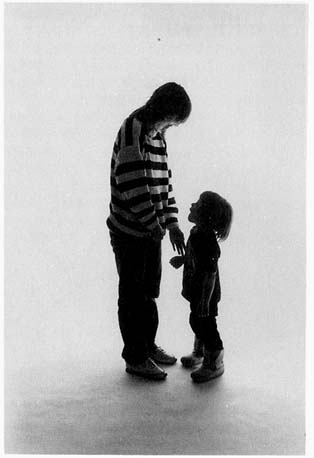
1. Anonymous woman with her five-year-old son (San Francisco, Calif., 1988) Age: 30
Diagnosis: "HIV-positive"
Sexual preference: Heterosexual (mother of one)
Transmission: Heterosexual sex with her husband
"I'm thirty. In 1985 my husband died of AIDS. He had a life none of us knew about. I tested HIV-positive in 1985 and believe I got it from sexual contact with my husband. I have a five-year-old son. We got lucky. He's negative. The hardest thing is to keep an emotional balance for him. I have to protect him from the idea of being ostracized because his parent has AIDS. The schools can't keep him out because he's negative, but the kids won't play with him. He'll be considered a leper. What kind of life will he have?"
Photograph 2
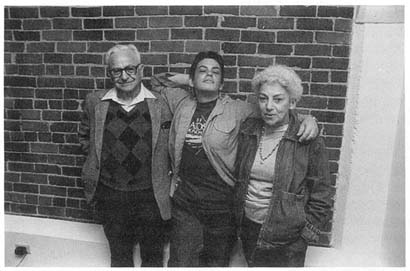
2. Meredith Miller
Age: 33
Diagnosis: "AIDS"
Sexual preference: Heterosexual (mother of two)
Transmission: Heterosexual sex with her boyfriend
Died: August 1989
"If I tell you I was diagnosed with a terminal illness, the normal reaction is 'Oh, do you need anything? How are you feeling?' If I say I have AIDS, the first question is 'How did you get it? What have you been doing?' Nobody cares that I am sick, that I hurt, that I'm tired all the time, that each movement is painful. They hear AIDS, and they have a preconceived idea of my life-style and my morality. Hey, nobody told me about AIDS! What is my crime? That I loved somebody too much?"
Meredith
"Don't close the door between you. Offer them every kind of support that you can. Take them in as your friends as well. I think the important thing is to let them know that you love them … that the love continues … it doesn't stop. Let them know that you love them both verbally and physically.
"How do I feel about Merry being sick? I feel it's just dreadful. Something must be done, there must be a cure. It's just horrible, this disease that is taking so many young people. And to think my daughter is one of the people who is affected by this."
Lillian, Meredith's mother
"Reinhold Niebuhr said the same thing about the Holocaust. When they killed the Jews, we weren't Jews and it didn't bother us. But when they started killing us, then we became concerned. … That's what it is now with the heterosexual community."
Al, Meredith's father
Photograph 3
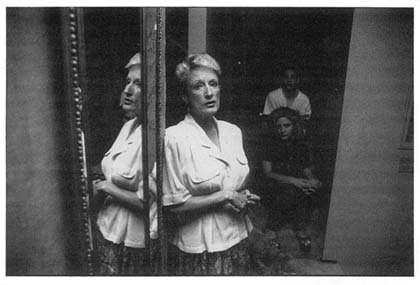
3. Natalie with her daughter, Carolyn, and her son, Doug (Sparks, Nev., 1990)
Age: 46
Diagnosis: "I'd prefer not to be labeled."
Sexual preference: Heterosexual (mother of two)
Transmission: Heterosexual sex with her husband
"One thing a disease does, especially if it is life threatening, is you don't believe you are immortal anymore. Most people are under an illusion … I'm not. It adds an edge to life. Life is much more interesting when you live the way people ought to live. I live for today. I don't live in the past, and I don't live in the future. God never promised anybody anything but today."
Natalie
Photograph 4
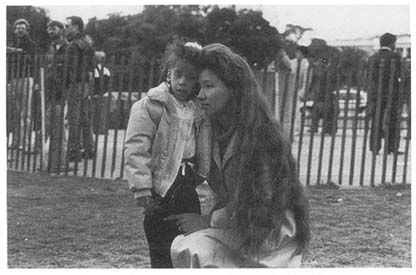
4. Eleana and Rosa (Washington, D.C., 1988)
Eleana is a child with AIDS. Of children affected with the virus, 70 to 80 percent are black, 10 percent are white, and 10 percent are Hispanic (Public Health Hearing on Women and HIV sponsored by the San Francisco Public Health Department; San Francisco, California; June 1987).
Photograph 5
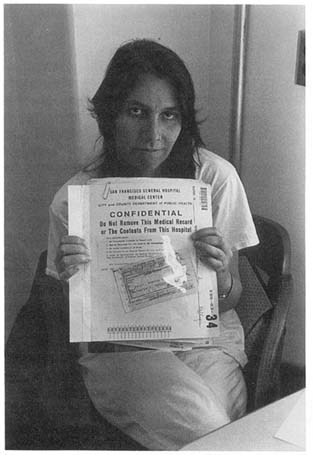
5. Sharon (San Francisco, Calif., 1987)
Age: 35
Diagnosis: "AIDS"
Sexual preference: Lesbian
Transmission: IV drug use
"Kathy and I have been together for five years. She has stayed with me and been my friend through this whole thing. Hope is really important. I have decided to go back home. … My family wants me there. I don't know how much time I have left. I want to be able to enjoy my family. I consider myself very lucky. I'm a little scared. For once I feel like I am doing the right thing. Kathy is coming home with me."
Sharon
Photograph 6
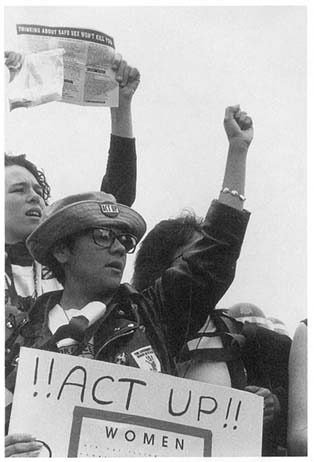
6. ACT UP! WOMEN (San Francisco International Conference on AIDS, June 1990)
Women are the "hidden population" of the AIDS epidemic and comprise the fastest growing segment of AIDS cases. Since 1981 the number of women with AIDS has continued to more than double every six months. (Public Health Hearing on Women and HIV sponsored by the San Francisco Public Health Department; San Francisco, California; June 1987).
Photograph 7
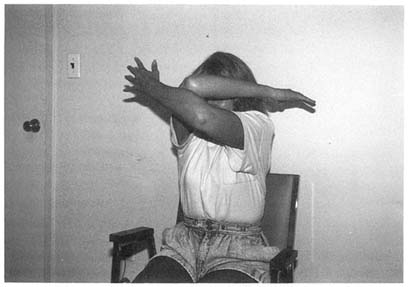
7. "Gertrude" (Long Island, N.Y., 1990)
Age: 39
Diagnosis: "HIV-positive"
Sexual preference: Heterosexual
Transmission: Heterosexual sex
"I'm one of the 'paranoids' that does things underground. Nobody knows about me because I work, and I don't really trust anybody at all. I'm one of those angry people. I've seen too much in my life. I have chosen not to tell my friends, except two people. There are people whose life has to continue. Women more so than men are hated for having this."
"Gertrude "
Photograph 8
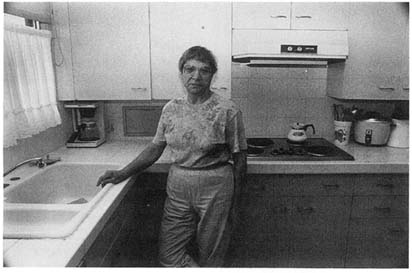
8. Amy (San Francisco, Calif., 1989)
Age: 58
Diagnosis: "AIDS"
Sexual preference: Heterosexual (mother of two)
Transmission: Blood transfusion
"It's lonely being a woman with AIDS. I don't come in a community. I want people to make it okay. I want the medical profession to recognize the difference between female and male. Women have different problems, both physically and emotionally. I'm an activist, and I'm sorry if I offend anyone, but I'm full of anger and rage. I talk about empowerment and self esteem … integrity and women's health issues. I have a lot of things to say!"
Amy
Photograph 9
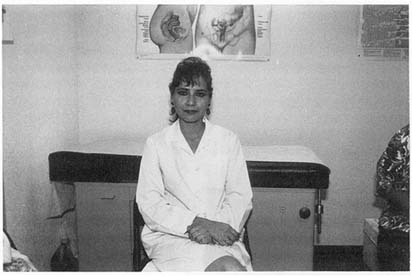
9. Elisa, medical doctor, Compañeros Women's Project (United States—Mexico Border Health Association, Juárez, Mexico, 1990)
"We don't give only medicine and condoms, we give them our time, our dedication, and hopefully an arm to hold on to. We do have limited resources. We work in a very poor country, and we work with people who are very needy. It's hard for people in developing countries to really evaluate and define what need is. What we see … the poverty doesn't compare in light of our limited resources. It's a blessing in a way. We have a very important responsibility, and we have to give the best of ourselves."
Rebecca Ramos, project director
Photograph 10
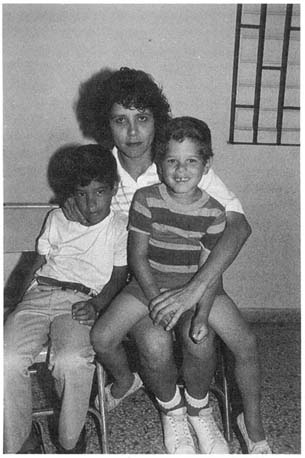
10. Angie with her sons, Xavier and Pedro (Bayamon, Puerto Rico, 1990) Age: 27
Diagnosis: "HIV-negative, with severe positive symptoms"
Sexual preference: Heterosexual (mother of four)
Transmission: Heterosexual sex
"I have four boys. The oldest is with my mother; the three youngest are with me in my apartment. I had been living with a guy that was a drug user. I don't shoot. I got fearful and got scared, that's why I came to the program. I have been tested the first and second time. Thank God they [the children] have all been negative. I'm worried about it … it's a problem for all."
Photograph 11
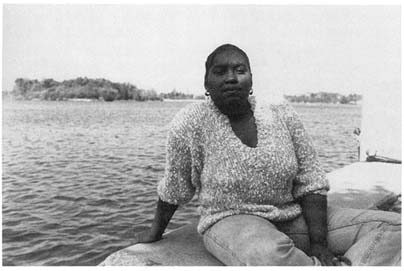
11. Pam (Wilmington, N.C., 1990)
Age: 27
Diagnosis: "HIV-positive"
Sexual preference: Heterosexual (mother of two)
Transmission: Heterosexual sex
"Me, myself, I'm only positive, and I have energy most of the time. My main concern was for my kids. They're both okay. It's amazing the amount of ignorance there is. It's amazing how little people know about this disease. I am an actual woman that lives and breathes, with kids … and I pay bills, too! There's a lot of info about how not to get this disease, but there's nothing that tells you how to live with it once you have it!"
Photograph 12
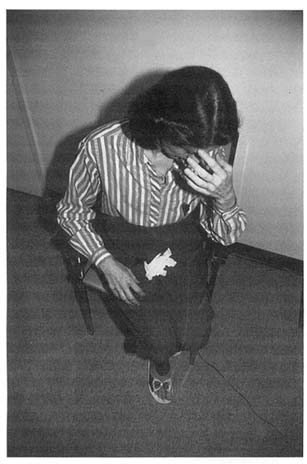
12. Rose, mother of a twenty-two-year-old daughter who died of AIDS (Long Island, N.Y., 1990)
Daughter: Dawn
Age: 22
Diagnosis: "AIDS"
Sexual preference: Heterosexual
Transmission: Heterosexual sex
Died: September 1990
"At the time I questioned everything. It takes a while to accept. Maybe the test is wrong. Maybe the doctor's wrong. … But of course, they said 'NO!' There's such a problem with this disease. People will not admit it exists; they think, 'We have no problem on the Island' … that it's hyped up by the papers and that it doesn't happen to everybody like you and me. …
"Well, we did everything. We did everything that was expected of us, that we were supposed to do. You work hard all your life, make a couple of bucks, get married, you have a family, have a child, and where does it all lead …?"
Photograph 13
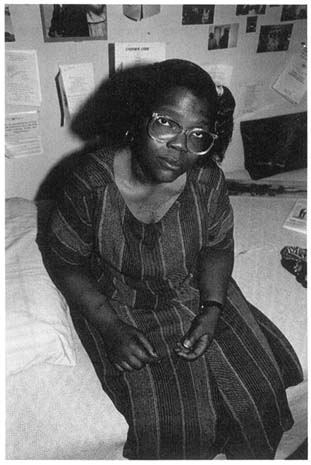
13. Wendi Modesti (Syracuse, N.Y., 1990)
Age: 37
Diagnosis: "AIDS"
Sexual preference: Heterosexual
Transmission: IV drug use
"What I'm trying to do is put a face on AIDS so that people will begin to associate this disease with human beings. This is a human illness. It's the human element that will take out the fear. I can be anybody's daughter or sister or wife. Stop putting it in the shadows. My name is Wendi Modesti, and I've got AIDS. Let me tell you how I got it so you won't get it."
Wendi
Photograph 14
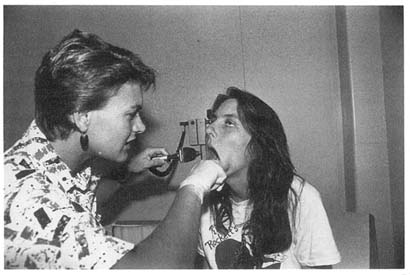
14. Lauren Poole, nurse practitioner with Sharon at Project Aware, San Francisco General Hospital (San Francisco, Calif., 1987)
No personal statement available.
Photograph 15
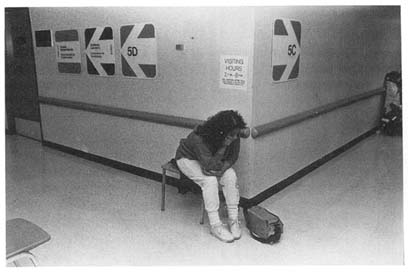
15. A Relative waits, San Francisco General Hospital (San Francisco, Calif., 1987).
No personal statement available.